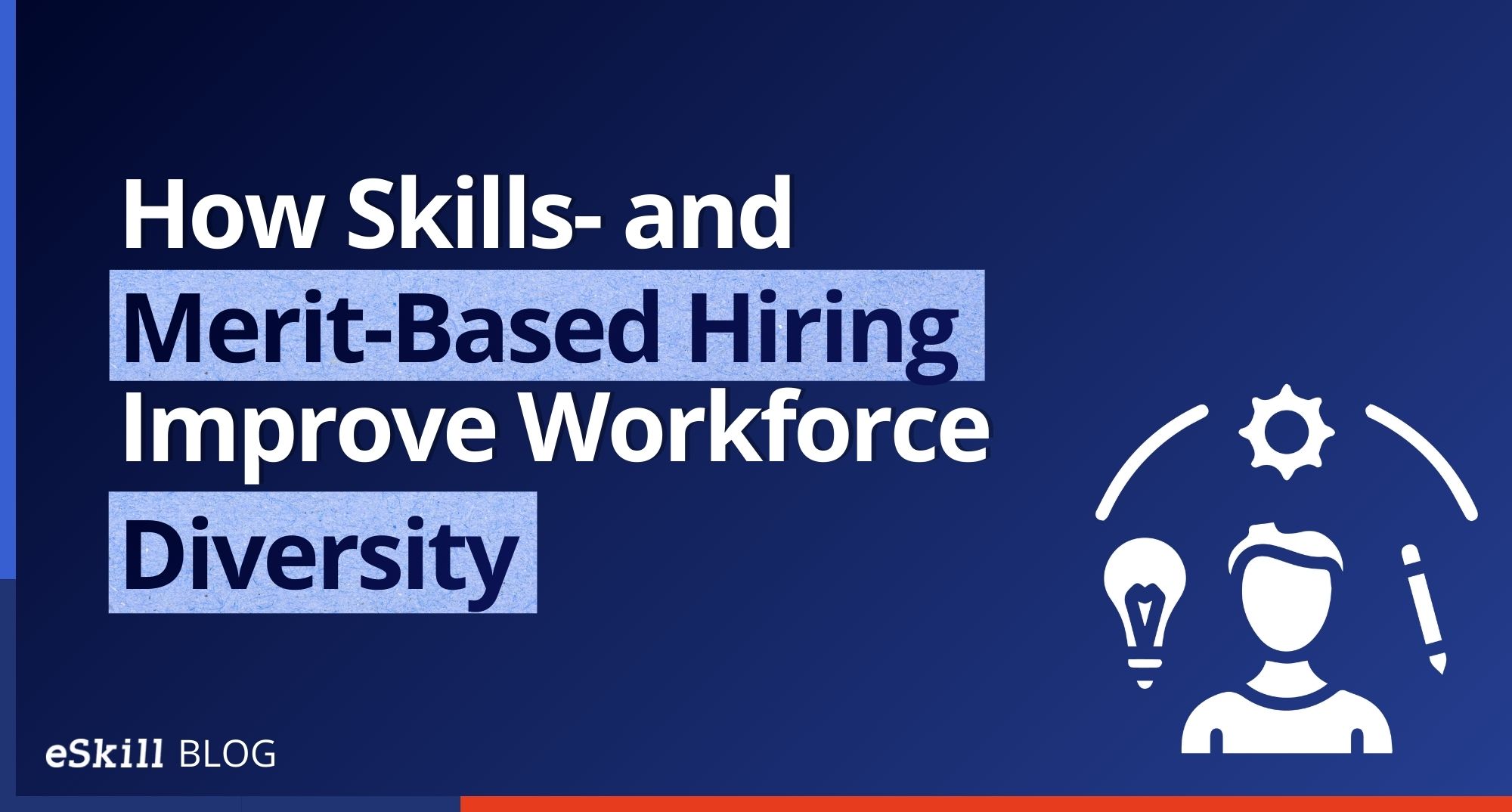Your recruiters are tasked with finding the best-qualified employees for all your job roles. So, they screen applicants to identify candidates with the required skills and aptitudes and eliminate those who are unqualified. This process works as it is supposed to unless unconscious bias intervenes.
Subjective bias, or making snap judgments about people, can result in hiring decisions that are irrational and unfair. Biased hiring contributes to systemic discrimination and lowers employee morale and productivity. Research conducted by Deloitte showed that 68% of U.S. employees felt workplace bias hurt their productivity, and 84% reported that it negatively impacted their mental health.
Since workplace bias hurts productivity and employee morale, HR leaders and hiring managers take all possible measures to mitigate it. One tactic many find effective is to implement skills- and merit-based hiring. This means they focus on applicants’ technical skills and core competencies without regard to whether the skills were self-taught or acquired through education or on-the-job experience.
Some HR teams and hiring managers initially expressed the concern that skills-based hiring could lead to hiring mistakes that hurt business. However, they have learned that hiring based on merit is five times more predictive of future performance than relying on education and credentials. Employers also report that hiring employees who offered skills gained through life experience actually improved productivity.
These are some ways skills-based recruiting can help you minimize bias in your hiring process and help you improve workplace diversity.
Rely on Skills Assessments to Identify Top Candidates
Using skills assessments to evaluate applicants is the best way to implement a skills-based recruiting process that minimizes unconscious bias. Assessments virtually eliminate the likelihood of bias influencing hiring decisions because all applicants are required to complete the same skills tests.
If you use an industry-leading assessment solution such as the eSkill Talent Assessment PlatformTM, you can access an extensive library of validated subject- and job-based skills tests. You can use them “as is” or tailor them for each job role by adding and deleting questions and designating difficulty levels. You can also build skills assessments by choosing questions from various tests and adding your own questions.
When applicants complete and return skills tests, you can rank them by score. So, it is easy to instantly identify top candidates and move them to the next step of your hiring process. You can also run reports to share with your team and hiring managers that provide detailed information about candidates’ responses to questions.
Use Validated Skills Tests to Ensure Accurate Merit-Based Hiring
It is impossible to make merit-based hiring decisions if the hiring team is unclear about what skills and competencies a candidate needs to succeed in a role. Loosely defined job requirements also lead to unfair hiring practices and open your company to discrimination lawsuits. This is why conducting a thorough job analysis is the first step toward reducing recruiting bias and developing a legally defensible hiring process.
A job analysis is the process of defining the required tasks that an employee must be able to perform to complete a job successfully. The hiring team or a third-party talent acquisition professional determines the critical skills and aptitudes that are required, and these become the basis for skills-based recruiting.
Use Video Response Questions to Create Structured Interviews
Traditional, unstructured interviews can resemble interactions at a networking or “speed dating” event. The two parties exchange greetings and engage in small talk with some predictable “choreography,” and then move on to conversational questions such as, “What are your greatest strengths and weaknesses?” and “Where do you see yourself in five years?” Unstructured interviews like this are extremely subjective and can allow unconscious bias to influence hiring decisions.
Structured interviews reduce the risk of unconscious bias. All candidates complete the same assessments, answers are scored automatically, and video questions are on-demand. This means applicants listen to questions, record their answers, and do not engage in small talk with members of the hiring team. There is no direct contact with hiring team members. Some organizations even disable the video so hiring team members cannot see the candidates and can only listen to their answers.
In a carefully designed, structured interview with standard scoring practices, there is considerably less room for unconscious bias. Setting up structured interviews is simple with the eSkill Talent Assessment PlatformTM because of its innovative video response question feature. This helps you make hiring decisions based on skills and abilities and reduces your chances of extending an offer to a less-qualified candidate who interviewed well.
Do you want to replace your traditional interview process with skills-based recruiting to reduce bias and increase workforce diversity? Contact us to request a demo.

Get ademo.






